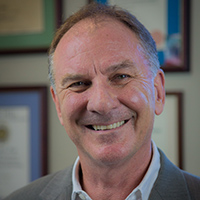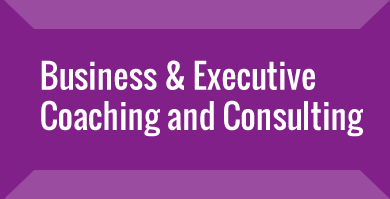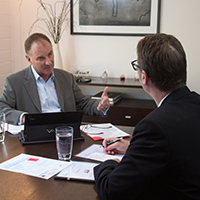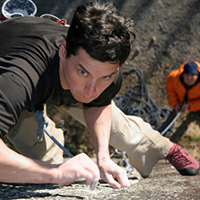“Minds at Work”, in Cambridge, Mass, founded by Robert Kegan, a professor at the Harvard Graduate School of Education and Lisa Lahey, a development psychologist who also teaches at Harvard, guides business owners and executives through a step-by-step process of self-examination and gradual behavioural change.
The program is based on the idea that, like dieters with a weakness for doughnuts, many business owners and executives want to change but behave in ways that impede their progress. So, rather than teaching technical skills, “Minds at Work” gives managers structured exercises to help them pinpoint the ingrained habits and beliefs that are undermining their goals.
If you are stuck, get unstuck. Here's how.
Use this four column exercise to become aware of what "big assumption" you are protecting:
a. Complete the statement, "If only, ________________________." This is a complaint of why something is not happening for you.
b. After you have written the complaint, determine what commitments or convictions you hold that are actually implied in this response. Then write out the statement,
"I am committed to the value or importance of ________________________________" in the first column. This allows you to transfer the "complaint" into a statement of "commitment." The language of complaints tells us what we can't stand; the language of commitments tells us what we stand for.
Where there is passion, there are possibilities for transformation.
c. Write down in the next column (next to the listed commitment) what you are doing and/or not doing that prevents your commitment from being fully realised. This process allows you to move from the language of "blame" to the language of "personal responsibility."
d. In the 3rd column, next to each "doing" or "not doing" statement, write down what you are "protecting" - by recognising a competing commitment or value: "I may also be committed to ____________." This helps you to notice any contradiction that is showing up which is keeping you from honouring the previous commitment. This step will help you understand why your "immune system to change" is working against getting you where you want to be. This step allows you to move from the language of "New Year's Resolutions" to the language of "competing commitments."
e. Now in the last column, next to the competing commitment you have identified, write down the "big assumption" that is the basis for the competing commitment that you are protecting. "I assume that if __________________ ." This step allows you to move from the language of "big assumptions than hold you back" to the language of "assumptions that you hold."
Now, you begin to understand why this change business is so difficult and discouraging at times.
To effect significant change, we must continuously notice whenever these competing assumptions show up and test whether we want to hold on to our big assumption. Remember that the process of living a life of discovery and continual self-awareness and learning is important, but difficult.
The above exercise is taken from the book, "How the Way We Talk Can Change the Way We Work" by Robert Kegan and Lisa Laskow Lahey (Jossey-Bass 2001).
“On the one hand, you have one foot on the accelerator and you want to delegate,” Dr. Lahey says. “On the other hand, you have a foot on the brake because you are committed to never being shown up.”
Counterproductive habits are difficult to give up because they serve a purpose, Dr. Lahey says: they help business owners and executives protect their self-image. But, she says, managers who are willing to investigate and challenge their own deeply held beliefs often find that their original assumptions were incorrect, a discovery that allows them to change, she says.
Dr Lahey and Professor Kegan, offer some case studies in their book, “Immunity to Change: How to Overcome It and Unlock the Potential in Yourself and Your Organization.”
Source: The New York Times, March 18, 2012



























